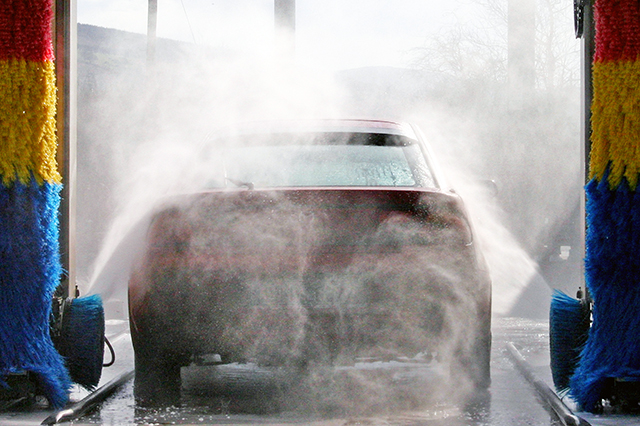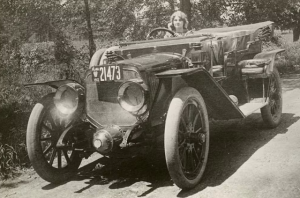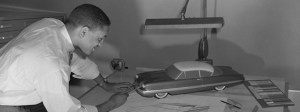As long as people have had cars, they’ve needed to keep them clean. For the majority of car wash history, the process was anything but smooth. Professional cleaning was labor intensive and fairly inefficient, so most people completed the task themselves.
But like nearly every other part of automobile history, the car wash has seen light-years worth of evolution in just a few decades. In the latter half of the 20th century, car washes began to introduce automation. Ever since, the process has continued to advance to the one we have today, where a vehicle can go from mud-, dirt- and grime-riddled to gleaming and glistening in a flash.
Car Wash History Begins
Although there is some debate over which professional car wash was in fact first, the title is widely credited to belong to Automobile Laundry in Detroit, Mich. Frank McCormick and J.W. Hinkle opened the business in 1914.
The actual process of cleaning the car was rudimentary at best. Workers had to physically push the vehicles through several stations that performed different cleaning tasks.
It took several decades for the car wash to become semi-automated. In 1940, an automatic conveyor car wash opened in Hollywood, Calif. But even this process was underdeveloped. It used a winch system to pull the car along, but workers still had to do all the manual labor.
In 1946, the first cleaning aspect of the process became automated when Thomas Simpson designed and built an overhead sprinkler system that washed down vehicles.

Automatic Car Wash History
Car wash history took some major steps forward in the 1950s when a man by the name of Dan Hanna Sr. entered the picture. In 1955, Hanna was vacationing in Mexico. His hotel was located across the street from a car wash, which he became fascinated with. When he returned home to Portland, Ore., he opened his own business, Rub-A-Dub car wash in Milwaukie, Ore.
Hanna quickly realized the need for a more efficient cleaning process and began building and testing new equipment. In 1959, he had finally developed a working model of the first mechanized car-washing system. Not only did he utilize the machinery himself, he put them in other people’s car washes as well.
By the 1960s, Hanna had become the premier manufacturer of car wash equipment. During this time, he made major strides in car wash history, patenting numerous revolutionary car wash inventions including the wraparound brush, soft cloth friction wash and recirculating water system.
Over the years, car wash businesses continued to work to streamline the cleaning process. Around the turn of the century, a new priority came to the forefront: limiting waste. New technology emerged that better recycles and preserves water as well as reduces electricity usage.
The Car Wash Today
The car wash industry has ballooned to become an enormous trade.
There are more than 60,000 car wash locations in the United States, According to the International Carwash Association. More than 2 billion cars are washed each year in North America. This equates to retail sales totaling roughly $15 billion.
Much of this has to do with a shift in consumer trends. In 1994, less than half of all drivers reported last washing their vehicle at a professional car wash. In 2019, that number jumped to 77%.
Types of Car Washes
The evolution of the car wash has resulted in a host of different professional car washing options available to drivers today. These can include:
- Self-Service: Drivers park their cars at a designated bay and pay a small price for access to cleaning equipment, including high-pressure water hoses, sponges and soaps. Car owners must do all the cleaning themselves.
- Automatic: automated car washes pull the car along a conveyor belt and utilize machines to most of the cleaning. These can include soft touch washes, which use cloth to scrub the car, or no touch, which use only high-pressure water and soap.
- Hand Wash: Professional cleaning attendants wash the car completely by hand.
Each method has its advantages and disadvantages in regards to price, time and efficiency. For example, self-service is more labor intensive for the driver but is almost always the cheapest option. Hand washing can be customized to a vehicle’s precise cleaning needs but it a process that costs more and takes a significantly longer time to complete.
Visit NAPA Auto Parts for all your car-washing needs and receive 10% off just for being a AAA member. If you prefer to let the pros handle it, AAA members also receive discounts at ScrubaDub Auto Wash Centers, RoJo Car Wash and Pristine Auto Spa.
Are you a regular car wash patron or do you prefer to washing it yourself? Let us know in the comments below.
13 Thoughts on “The History of the Car Wash Industry”
Leave A Comment
Comments are subject to moderation and may or may not be published at the editor’s discretion. Only comments that are relevant to the article and add value to the Your AAA community will be considered. Comments may be edited for clarity and length.

















I see a lot of consolidation in the industry. In my smaller market Florida town there have been two chains sold to bigger players. Both pushed recurring revenue models – ‘Monthly Pre-Paid Memberships’ where you can get a wash 1x / day for $25+/ month. Seems like for hat amount it would be hard to make money. Are these ‘roll up’ strategies to flip, or Do these businesses really make that much money?
What is the attraction to this industry?
Why do car washes not allow you to bring your car in if it has a bike rack on it? What does the bike rack do?
Bike racks, trailer hitches and other pieces sticking off of cars will catch the cloth of the equipment. Can damage the car and or the equipment.
And let’s not forget the “car wash for a cause”! Around here it’s usually for a local sports team. The results often aren’t perfect, but the kids enjoy doing it and raising money this way. And I enjoy supporting them.
As a senior citizen, I now go to a car wash but if you are younger the DIY method is a great workout and easy on the wallet!
Can. convertible be safely washed on automated car wash?
I go through an automatic car wash with my convertible but do not have the wax because of the canvas top…!
Have been using car wash for a few years ( monthly fee) once or twice a week. Followed by a spray wax. Always looks good.
The issue with “Tunnel Washes” these days is, they create micro-scratches (look like spiderwebs in sunlight) in modern clear coated, muti-stage paints. Unlike old single-stage paints used up to the 1980s, clear-coats are relatively soft. Wiping them with anything but a very soft, completely clean cloth can and does cause these micro-scratches. That is why detailers who hand wash and ceramic coating which are harder than clear-coats have exploded in popularity. It’s widely reported that the number one cause of scratches is improper wash techniques. I am not a detailer, just an enthusiast.
I wash and wax my car myself from April to October. During the remaining (cold) six months, I take it to a car wash. The car wash does a good job at a reasonable price but they always miss the top of the rear bumper.
If these car washers are recycling their water doesn’t that mean that in the North East, during the winter, you are salt blasting your car?
Hi Steve, most car washes use a filtration system that removes salt and other contaminants from the water. Thanks for the question!
good info